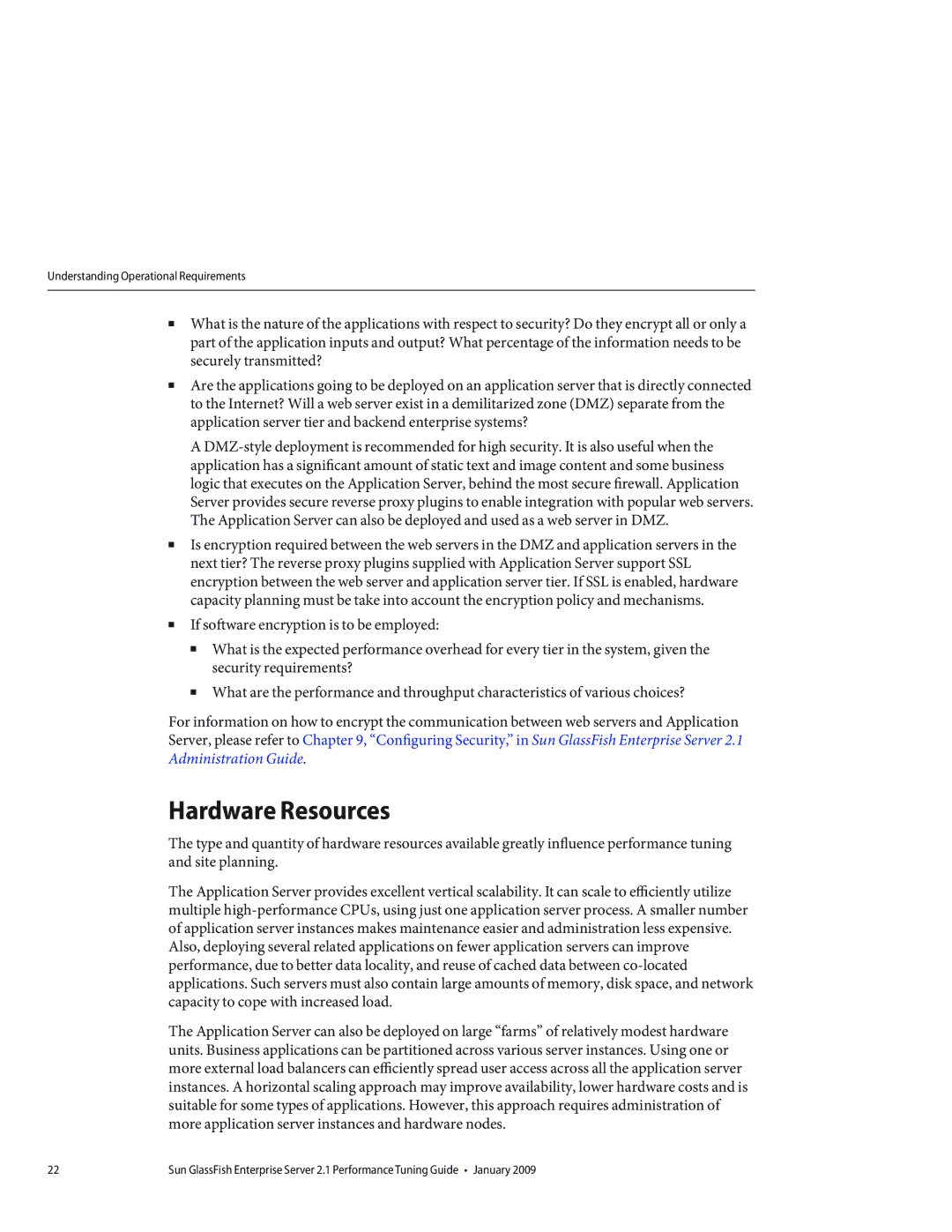Understanding Operational Requirements
■What is the nature of the applications with respect to security? Do they encrypt all or only a part of the application inputs and output? What percentage of the information needs to be securely transmitted?
■Are the applications going to be deployed on an application server that is directly connected to the Internet? Will a web server exist in a demilitarized zone (DMZ) separate from the application server tier and backend enterprise systems?
A
■Is encryption required between the web servers in the DMZ and application servers in the next tier? The reverse proxy plugins supplied with Application Server support SSL encryption between the web server and application server tier. If SSL is enabled, hardware capacity planning must be take into account the encryption policy and mechanisms.
■If software encryption is to be employed:
■What is the expected performance overhead for every tier in the system, given the security requirements?
■What are the performance and throughput characteristics of various choices?
For information on how to encrypt the communication between web servers and Application Server, please refer to Chapter 9, “Configuring Security,” in Sun GlassFish Enterprise Server 2.1 Administration Guide.
Hardware Resources
The type and quantity of hardware resources available greatly influence performance tuning and site planning.
The Application Server provides excellent vertical scalability. It can scale to efficiently utilize multiple
The Application Server can also be deployed on large “farms” of relatively modest hardware units. Business applications can be partitioned across various server instances. Using one or more external load balancers can efficiently spread user access across all the application server instances. A horizontal scaling approach may improve availability, lower hardware costs and is suitable for some types of applications. However, this approach requires administration of more application server instances and hardware nodes.
22 | Sun GlassFish Enterprise Server 2.1 Performance Tuning Guide • January 2009 |
